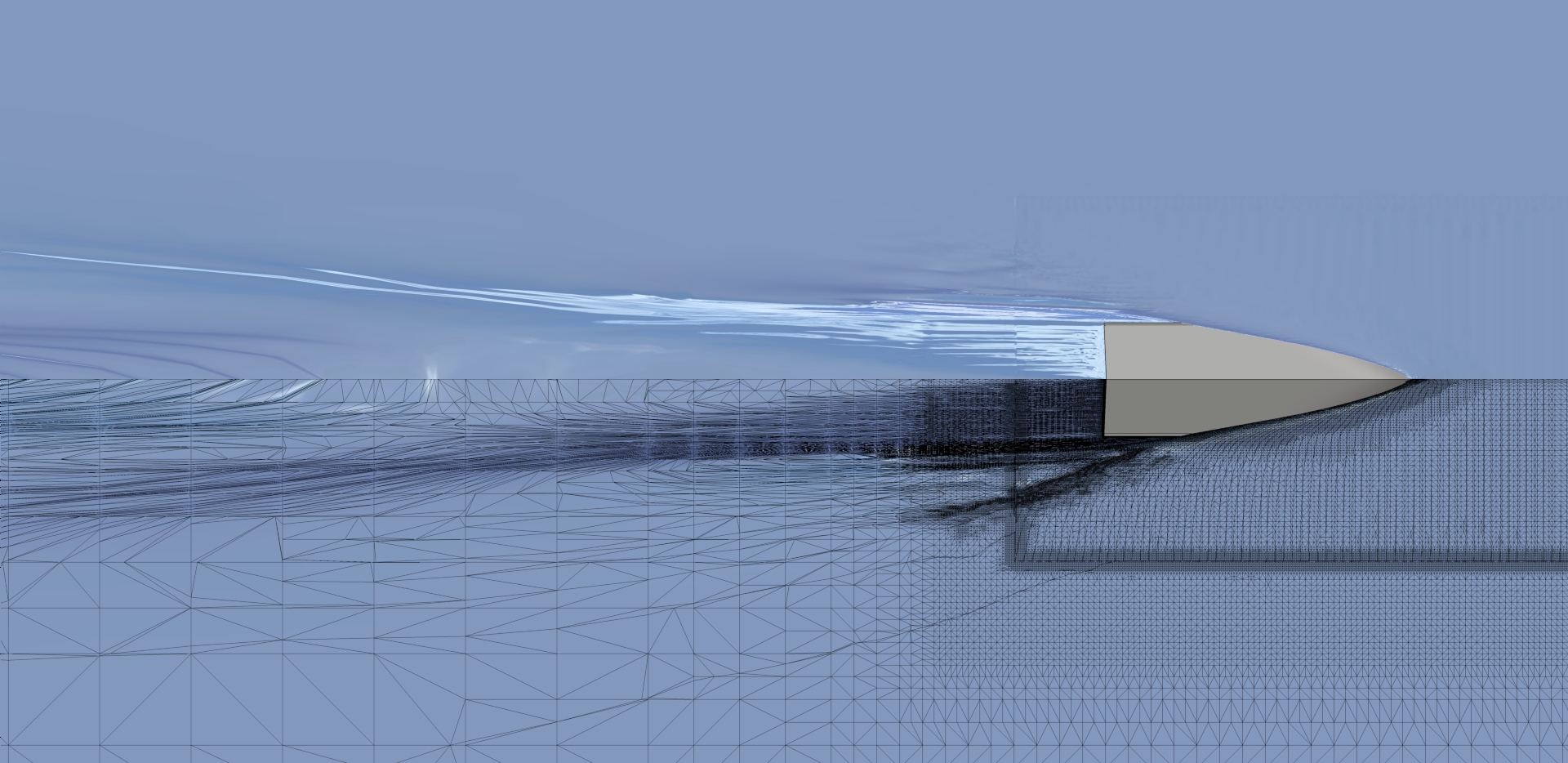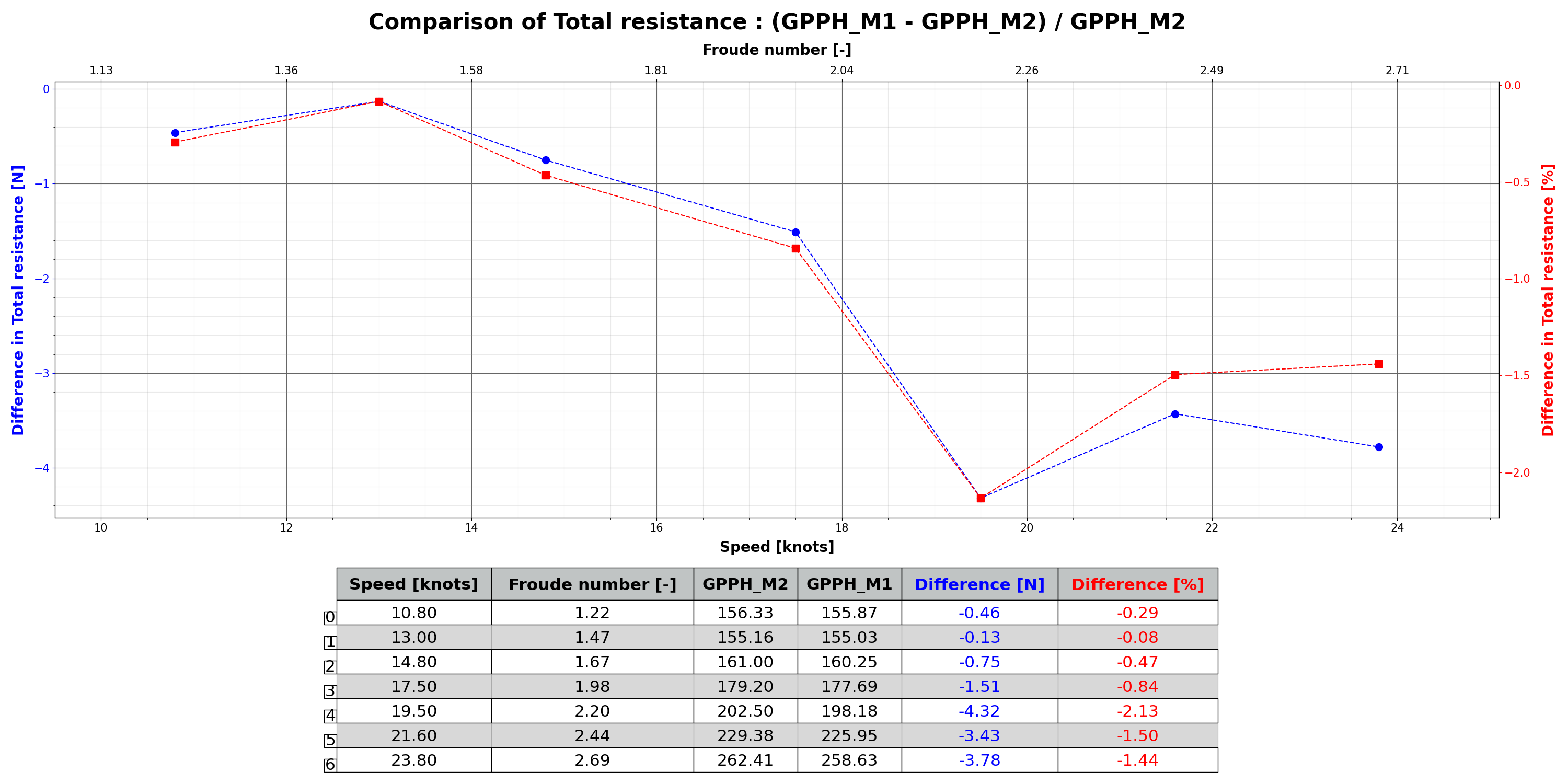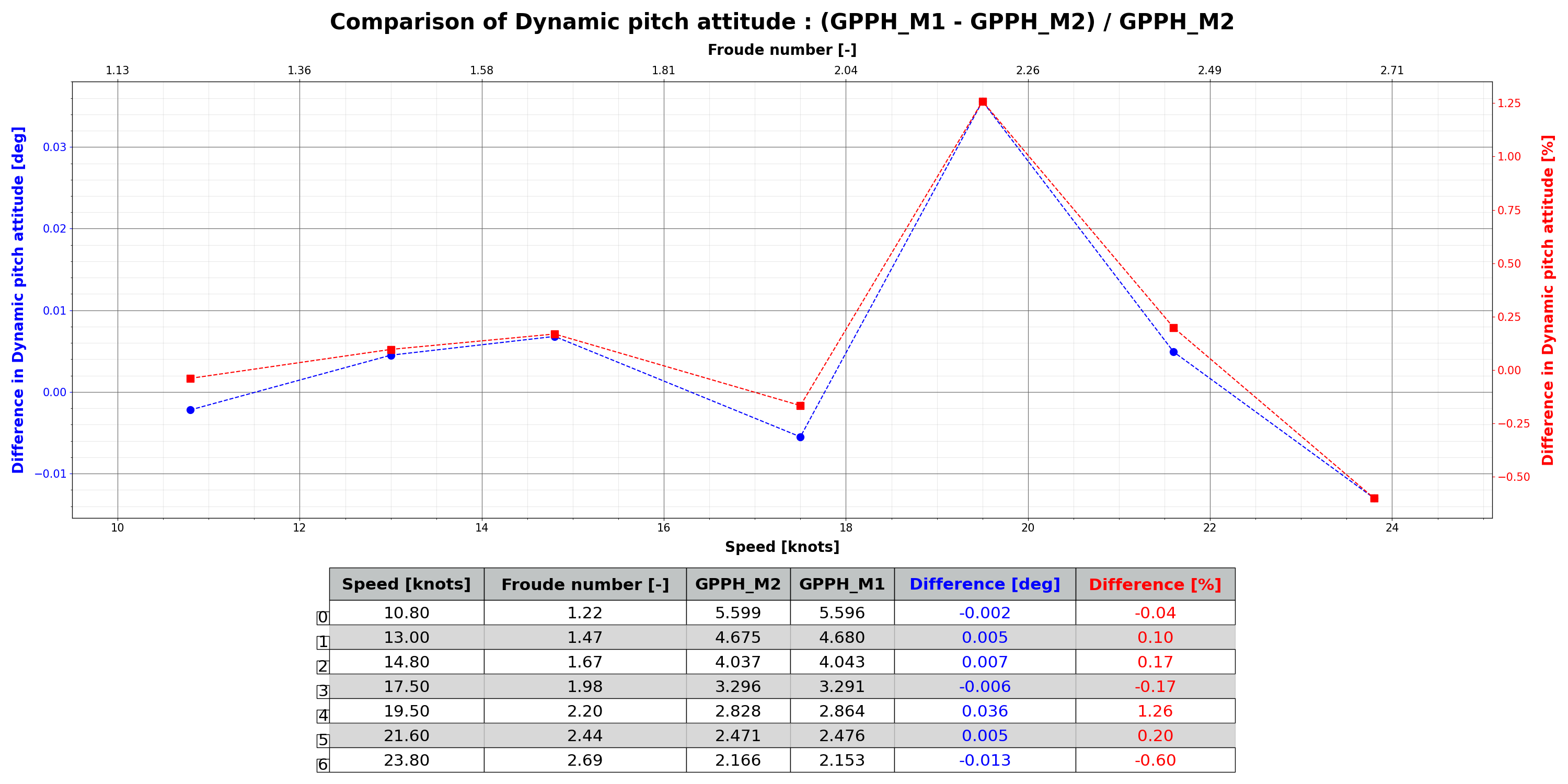
This report presents a comprehensive validation study of the overset meshing method using NepTech’s digital testing basin. The study compares the overset approach (M2) to the traditional mesh deformation method (M1) on a high-speed regime, covering a Froude number range from 1.2 to 2.7.
The results confirm that both methods produce very similar hydrodynamic predictions, with only minor differences in resistance, pitch, and heave across all tested speeds.
The resistance comparison revealed a maximum deviation of 2.13%, with an average difference of -1.00%, indicating a slight tendency of the overset method to predict lower resistance values. Similarly, the pitch and heave variations remained minimal, with maximum deviations of 1.26% and 0.54%, respectively. These results demonstrate that the overset meshing approach provides accurate and reliable predictions comparable to the mesh deformation method.
However, the study also highlights the significant computational cost associated with the overset method. Simulation time increased from 48 hours (mesh deformation) to 114 hours (overset), and the overset approach required more computational cores due to the higher cell count. This increased cost must be carefully considered when choosing the most suitable meshing strategy.
Overall, these findings confirm that the overset meshing method implemented in NepTech’s digital testing basin is accurate enough and can be reliably used in cases where large motions, breaking waves, or strong dynamic interactions make mesh deformation impractical. Despite its higher computational cost, the overset approach ensures robust and automated meshing capabilities, making it a valuable tool for complex CFD simulations.





Commentaires récents